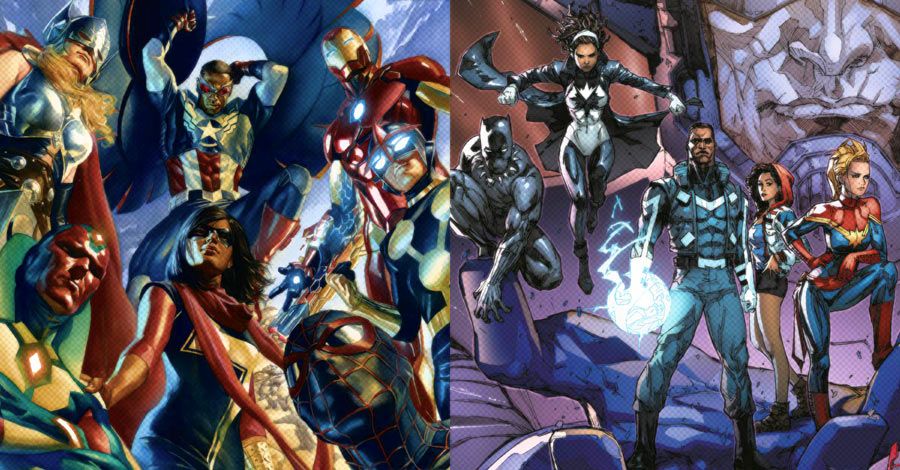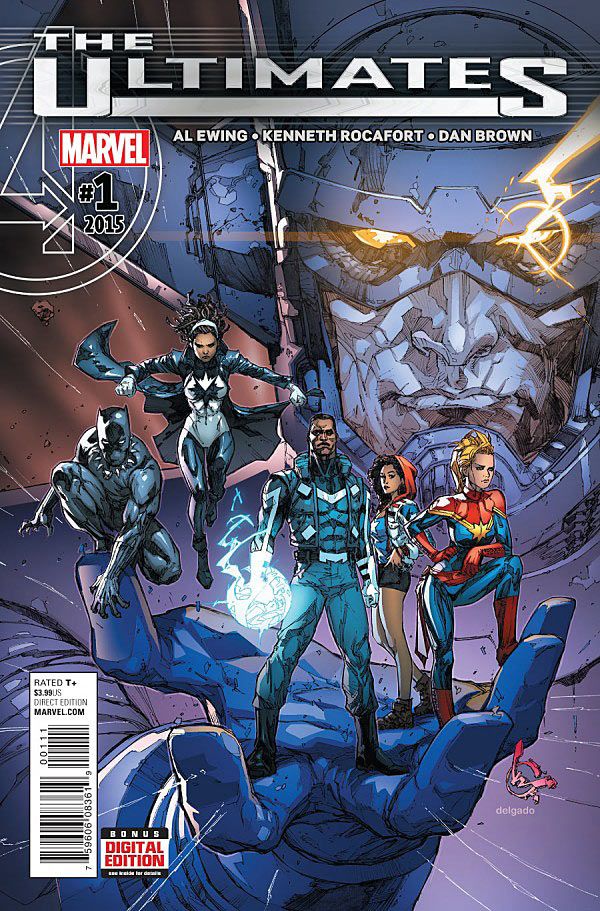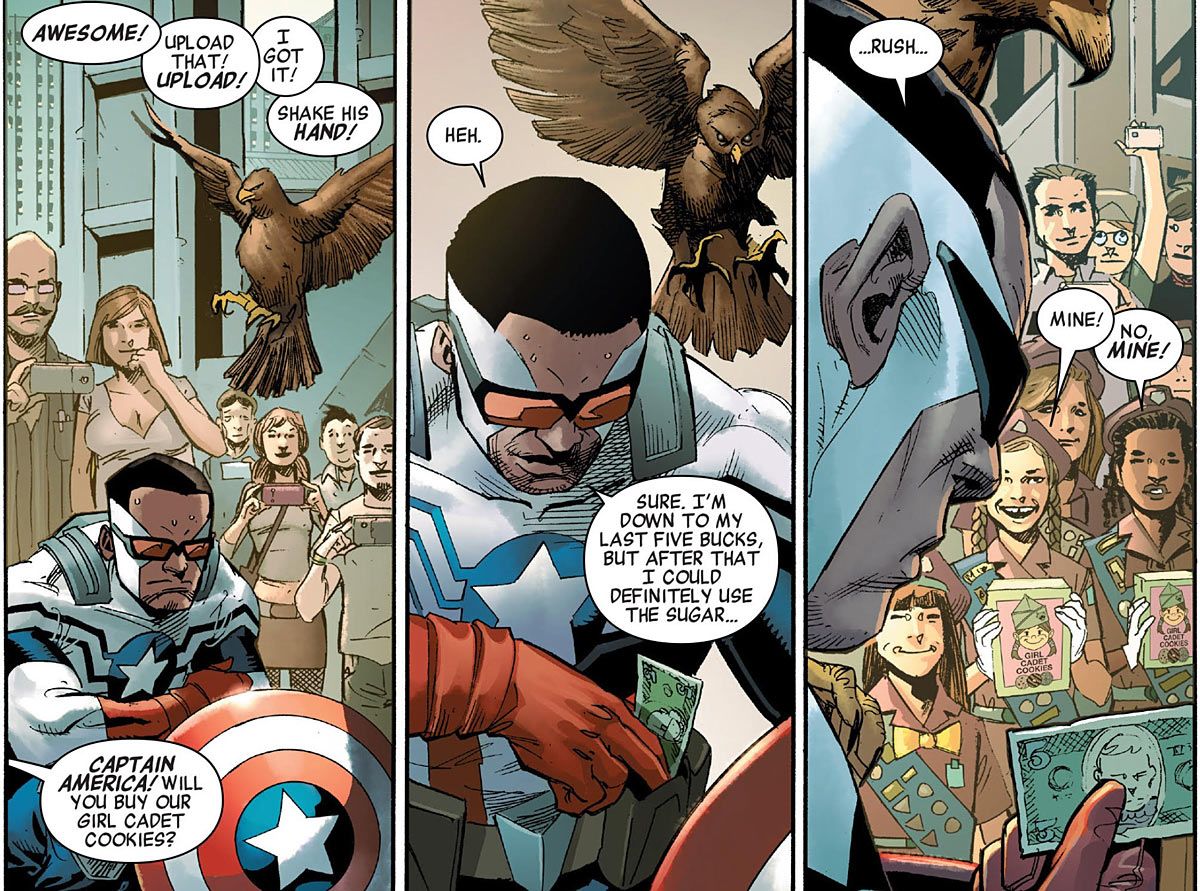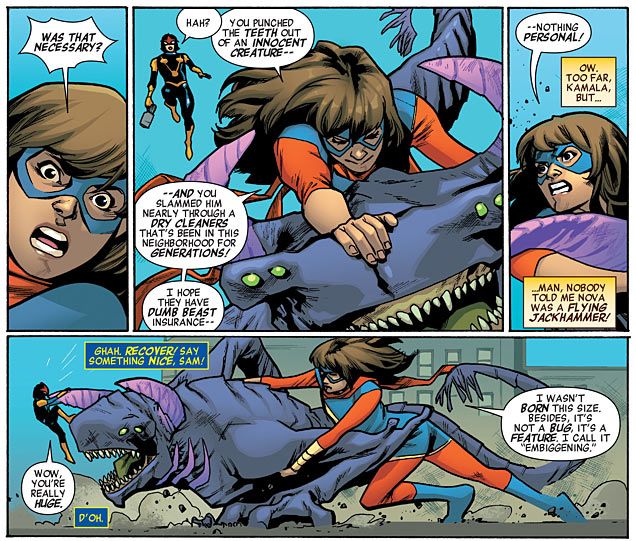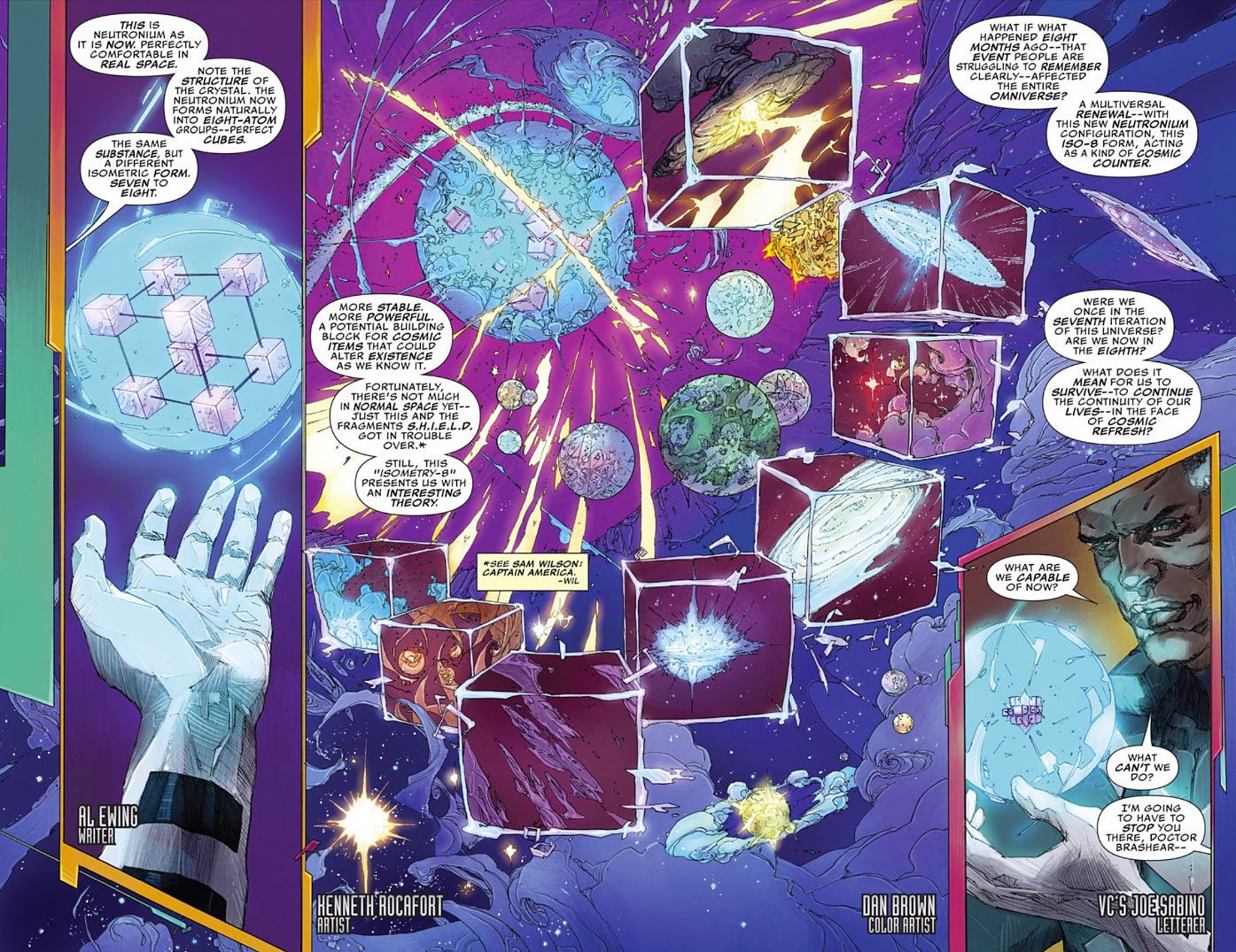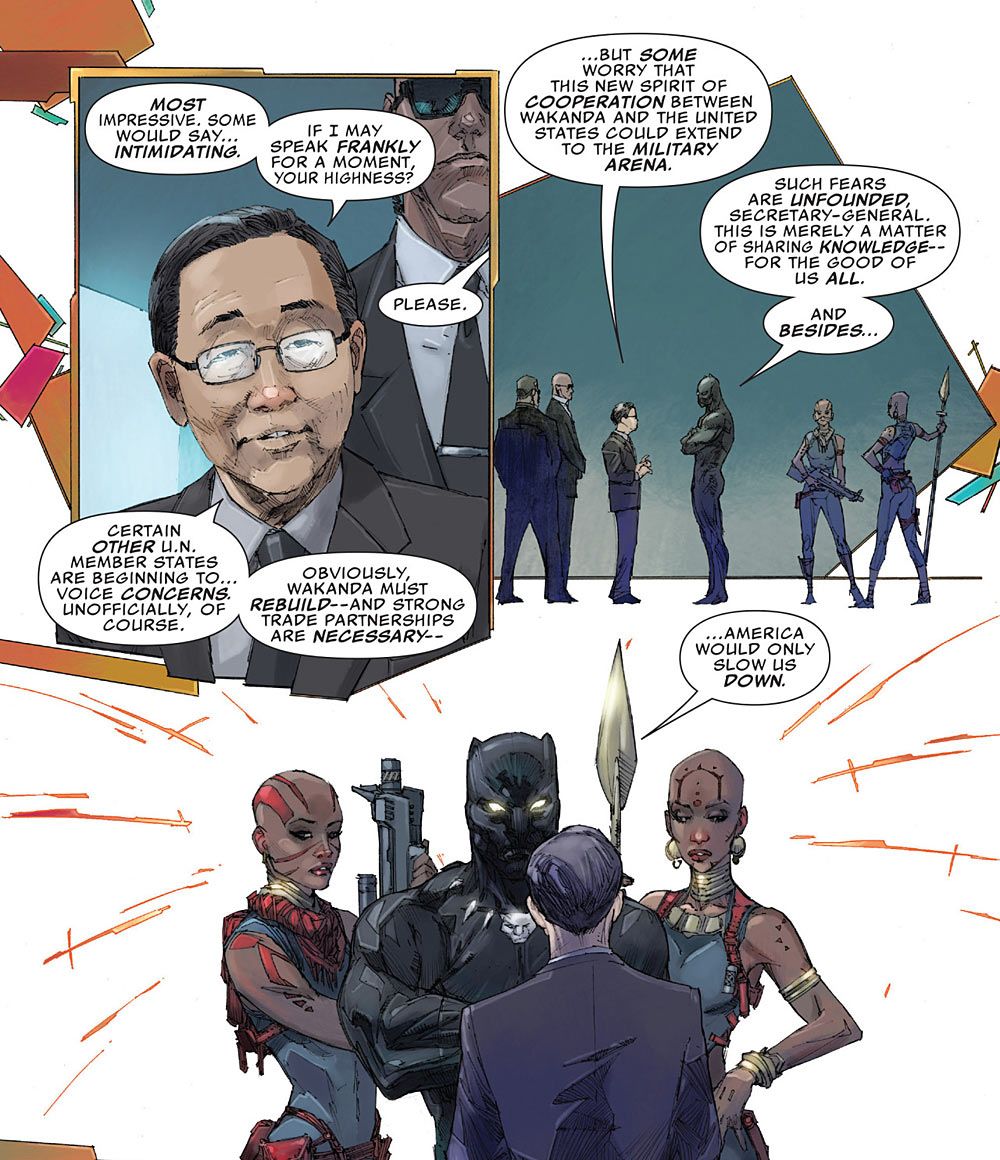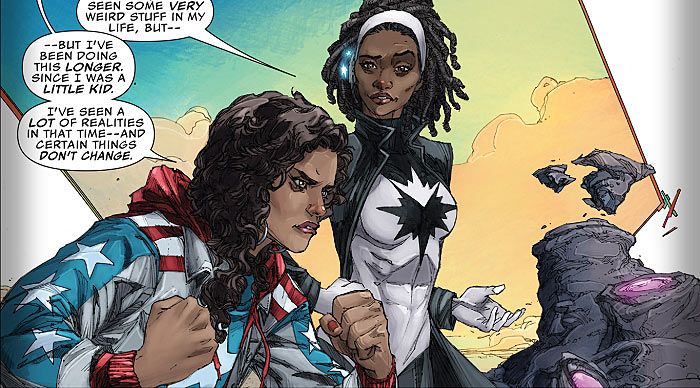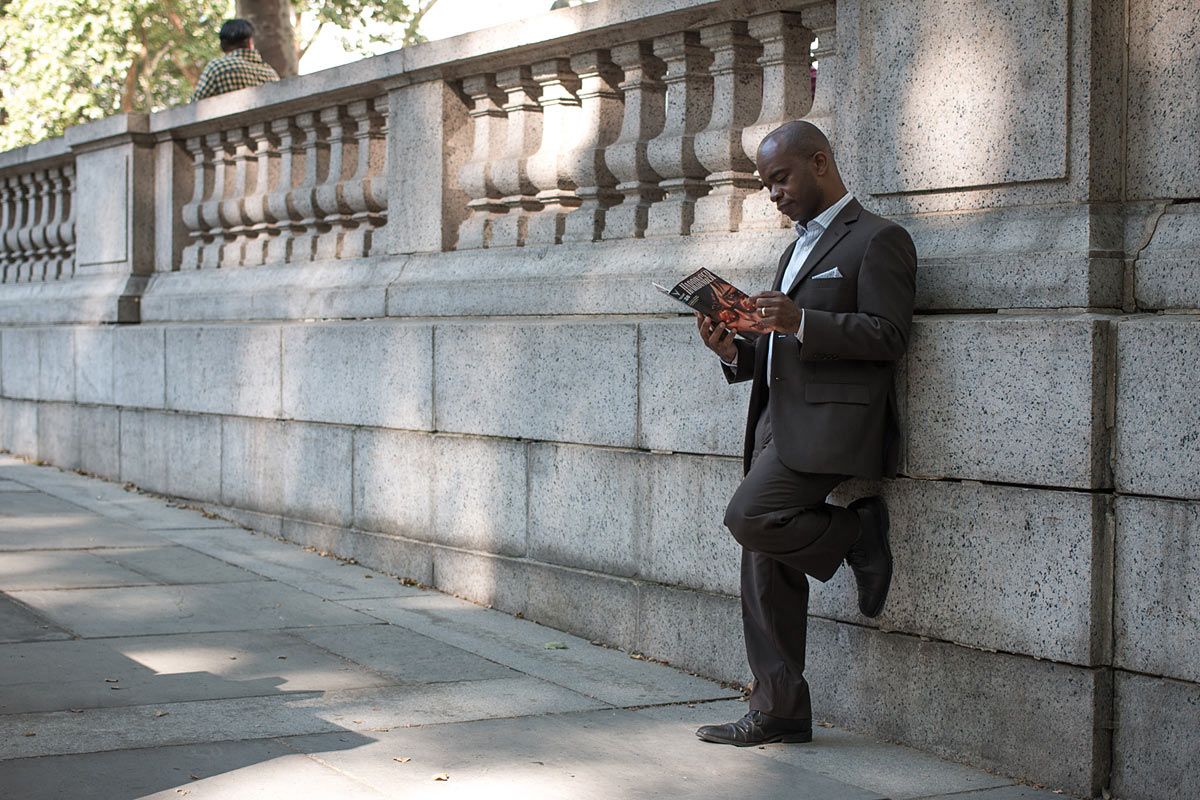2015 is a bad year for the All-Caucasian Superhero Team archetype.
Last month, Marvel Comics relaunched their superhero universe under the "All-New, All-Different" banner.
The initiative earned Marvel Comics the number one spot for sales in October, and six out of the top ten spots for relaunched titles overall.
Last week was Week Six of the relaunch. Two noticeable new books with a level of significance were "All-New, All-Different Avengers" and "The Ultimates."
With the name "Avengers" serving as Marvel's most known team by the general populace, any moves with that brand in particular have a special importance and level of visibility.
Writer Mark Waid and artists Adam Kubert and Mahmud Asrar led the creative team for "All-New, All-Different Avengers," with color artists Sonia Oback and Dave McCaig and letterer Cory Petit.
The team of Avengers in this book includes:
- Miles Morales, the Black/Latino Spider-Man
- Kamala Khan, the Pakistani-American hero Ms. Marvel
- Sam Wilson, the Black Captain America
- Sam Alexander, the Latino/Caucasian hero Nova
- Jane Foster, the new Thor
From their origin and for a good portion of their publication history, The Avengers lineup represented Marvel's top characters, some of which starred in their own monthly comic books.
The "All-New, All-Different" group follows this tradition, while also not-so-cleverly bringing together three well-known and highly-publicized heroes of color to create a focal point of diversity cred and marketability.
This is understood at the corporate and creator level, as writer Mark Waid starts the book off post-credits with a heroic feat by Captain America, then smoothly serves the hero up to a set of circumstances that put his character in jeopardy. The kind fueled by the mixture of public opinion and America's collective race-based presumptions.
Captain America's acknowledgment of the social microscope under which he now operates, what people project onto and expect of him, is the meta statement speaking to his real-world existence as an icon in America today.
This scene leads into the rest of the high-action adventure story without missing a beat. It doesn't set the tone for the story, but it speaks to the central idea that these new Avengers have to overcome the hurdle of acceptance, and earn the public's benefit of the doubt.
In the second story starring Ms. Marvel and Nova, a meeting between the teenage heroes goes from a destructive battle to a personal tale about young people trying to navigate around each other while keeping their emotional defenses up. A story made more touching by the fact that the cultural differences between Kamala and Sam have nothing to do with it.
The ritual of teenage attraction and denial between young people is nothing new, and ironically, it's fair to assume that most of the people who purchase comic books like "All-New, All-Different Avengers" are not teenagers, so the story isn't speaking to the demographic portrayed.
In a nation where both Latinos and Pakistanis are still subject to stereotypical portrayals, a possible relationship between Nova and Ms. Marvel, two young people from those respective cultures, may be an indication of the better world.
Better than the one we live in, with a narrative that supersedes America's racial politics and prejudices.
The confrontation of those politics and prejudices is on full display with "The Ultimates," another Marvel Comics superhero team series.
By the creative team of writer Al Ewing, artist Kenneth Rocafort, color artist Dan Brown and letterer Joe Sabino, "The Ultimates" is a high-concept, super-science series boasting a diverse team lineup of:
- Adam Brashear, The Blue Marvel; a Black superhero from the 1960s
- America Chavez, Latina superhero
- Carol Danvers, the second woman to have the title of Captain Marvel
- T'Challa, the Black Panther; ruler of the technologically-advanced African nation of Wakanda
- Monica Rambeau, the Black female superhero Spectrum; the first woman to have the title Captain Marvel
A group of heroes protecting Earth from cosmic-level threats and enemies, The Ultimates have the charge of engaging various alien races and cultures.
The first line of understanding and negotiation, before the need for offensive action.
It's quite a novel idea, then, that The Ultimates lineup is culturally diverse, because they're unencumbered by the myopic vision of a singular cultural point of view. Uniquely qualified to engage and examine other cultures through the prism of their own experiences as women and, or people of color in America.
After all, the team would have more problems on Earth than anywhere else, when it comes to their diversity.
In the documentary "White Scripts and Black Supermen: Black Masculinities in Comic Books" by Jonathan Gayles, Associate Professor of African-American Studies at Georgia State University in Atlanta, Georgia, there is a discussion with Dwayne McDuffie, one of the co-founders of Milestone Media, Inc.
"In popular entertainment, if there are three Black people in it, it is a Black product," McDuffie said.
This Rule of Three has been a subject of much discussion, even after McDuffie's passing a few years ago, and speaks to the heart of popular American entertainment in various media.
With that, "The Ultimates" certainly runs the risk of being generally perceived as a Black superhero team.
Such a perception would be ridiculous, but these are the times we live in.
Marvel Comics, in slick manner, took The Blue Marvel and Spectrum away from the trappings of "Mighty Avengers" and pulled them into a new title, thus making it harder to call the group "The Black" anything.
Additionally, Ewing's script highlights the differences between characters and the team members' perceptions of each other.
Spectrum's view of America Chavez echoes our awe of Chavez, a Latina powerhouse with vitality, outspoken opinion, and immediately decisive action.
How The Black Panther and the Wakandan nation is viewed by various United Nations members, speaks to the Wakandan prowess and confidence as much as it speaks to race.
Different from the approach of "All-New, All-Different Avengers," "The Ultimates" are accepted, and for the time being do not have to deal with issues of race-based perception as part of their mission.
There's a part early in the book where The Blue Marvel says "What are we capable of now? What can't we do?"
The questions come in the face of understanding he lives in a rebooted universe, and it may also be the rightful question of Marvel Comics.
The rightful question we ask of Marvel Comics.
The "Secret Wars" series, while unfinished, has been well-utilized by Marvel Comics to align their superhero line with the narrative of diversity, and more is on the way.
But how long will this last?
Can it be sustained?
Creative teams change, editors change, fictional team memberships change.
Will the diversity ratio within each title and across the line be a constant at Marvel Comics for the next five years? The next ten?
Is the overriding influence the publisher's evolving editorial ethos, or sales figures?
We'll have an indication when we get to "The Ultimates" #24 or"All-New, All-Different Avengers" #37, assuming some other event does not cut the titles' runs short and lead to a new #1 issue for both.
Marvel Comics may not be fighting for our acceptance like The Avengers are, but the hurdle of re-earning a certain benefit of the doubt exists.
Their competitor, DC Comics, is the publisher of the upcoming Milestone 2.0 launch/relaunch, which will result in a series of titles promoting a world of diverse superheroes.
The original Milestone showed everyone else how it was done back in 1993, and their new books will go toe-to-toe with Marvel's in terms of diversity.
2016 is going to represent a watershed moment in the history of American superhero comic books, but the years that follow will be more revelatory.
"What are we capable of now"?, asked a Black male superhuman, looking at a new, invigorated element in the universe.
We're going to find out.
Joseph Phillip Illidge is a public speaker on the subjects of race, comics and the corporate politics of diversity. In addition to his coverage by CNN Money, the BBC and Publishers Weekly, Joseph has been a speaker at John Jay College of Criminal Justice, Digital Book World's forum, Digitize Your Career: Marketing and Editing 2.0, Skidmore College, Purdue University, on the panel "Diversity in Comics: Race, Ethnicity, Gender and Sexual Orientation in American Comic Books" and at the Soho Gallery for Digital Art in New York City.
Joseph is the Head Writer for Verge Entertainment, a production company co-founded with Shawn Martinbrough, artist for the graphic novel series "Thief of Thieves" by "The Walking Dead" creator Robert Kirkman and video game developer Milo Stone. Verge has developed an extensive library of intellectual properties for live-action and animated television and film, video games, graphic novels and web-based entertainment.
His graphic novel project, "The Ren," about the romance between a young musician from the South and a Harlem-born dancer in 1925, set against the backdrop of a crime war, will be published by First Second Books, a division of Macmillan.
Joseph's newest comic book project is the upcoming Scout Comics miniseries "Solarman," a revamp of a teenage superhero originally written by Stan Lee.

